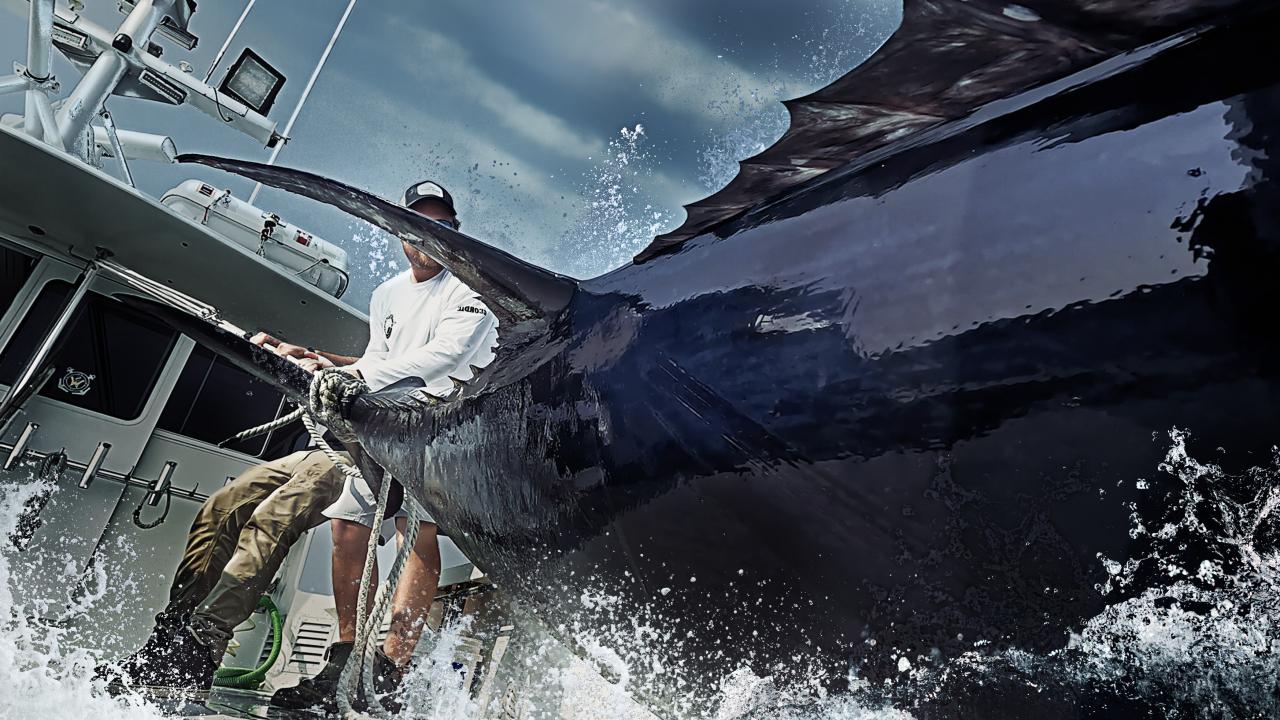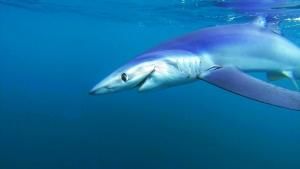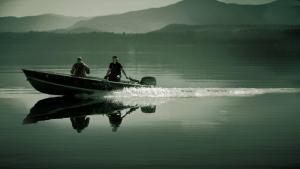- Canada
Americas
Asia & Oceania
Middle East & Africa
Europe
TV SHOWS
SHOWS BY SUBJECT
DON'T MISS
TOP SHOWS
VIDEOS
Don't Miss
Most Viewed
Lawless Island S7
Show: Lawless IslandSharkfest 2024
Show: Sharkfest 2024Cesar Millan: Better Human Better Dog S4
Show: Cesar Millan: Better Human Better DogShark Beach with Anthony Mackie
Show: Shark Beach with Anthony MackieMonkey Hot Tub
Show: Wild Japan: Snow MonkeysShipwreck Treasure
Show: Wicked TunaGenius: MLK/X Trailer
Show: Genius: MLK/XWicked Tuna S13 Promo
Show: Wicked TunaTuna Wars
Show: Wicked Tuna
PHOTOS
Photo of the day
![Air Enforcement Agent Murray walks... [Photo of the day - 1 SEPTEMBER 2024]](https://assets-natgeotv.fnghub.com/POD/15504.ThumbL.jpg)
![REENACTMENT - Captain Blackbeard... [Photo of the day - 31 AUGUST 2024]](https://assets-natgeotv.fnghub.com/POD/15502.ThumbL.jpg)
![A dramatic recreation shows... [Photo of the day - 30 AUGUST 2024]](https://assets-natgeotv.fnghub.com/POD/15500.ThumbL.jpg)
Most Viewed
Meet the JFK Officers
Show: To Catch a SmugglerShark Attack Victims
Show: When Sharks AttackMeet the Tuna.com Crew
Show: Wicked TunaTerrifying Encounters
Show: When Sharks AttackBounty Hunter Crew
Show: Wicked TunaHard Merchandise Crew
Show: Wicked TunaPhoto gallery
Show: Secrets of the Octopus
SCHEDULE

WICKED TUNA
- HOME
- ABOUT
- VIDEOS
- PHOTOS
- LOCATION
- INTERACT
- MORE
- Plight of the Bluefin Tuna
- Still Waters: The Global Fish Crisis
- Frequently Asked Questions
- Bluefin Tuna
- Seafood Crisis: Time for a Sea Change
- Wicked Glossary
- Bluefin Tuna 101
- Gloucester: The Fishing Life
- Captain's Q&A
- Rod and Reel: Bluefin Tuna Fishing by the Numbers
- Overfishing
- 10 Things You Can Do to Save the Ocean
- Seafood Substitutions
- Cook Wise Recipes
- Bluefin Tuna Resources
- Bluefin 360
- LEARN ABOUT BLUEFIN TUNA
SEAFOOD CRISIS: TIME FOR A SEA CHANGE
By Paul Greenberg
Republished from the pages of National Geographic magazine
Just before dawn a seafood summit convenes near Honolulu Harbor. As two dozen or so buyers enter the United Fishing Agency warehouse, they don winter parkas over their aloha shirts to blunt the chill of the refrigeration. They flip open their cell phones, dial their clients in Tokyo, Los Angeles, Honolulu—wherever expensive fish are eaten—and wait.
Soon the big freight doors on the seaward side of the warehouse slide open, and a parade of marine carcasses on pallets begins. Tuna as big around as wagon wheels. Spearfish and swordfish, their bills sawed off, their bodies lined up like dull gray I beams. Thick-lipped opah with eyes the size of hockey pucks rimmed with gold. They all take their places in the hall.
Auctioneers drill core samples from the fish and lay the ribbons of flesh on the lifeless white bellies. Buyers finger these samples, trying to divine quality from color, clarity, texture, and fat content. As instructions come in over cell phones, bids are conveyed to the auctioneer through mysterious hand gestures. Little sheets of paper with indecipherable scribbling are slapped on a fish’s flank when a sale is finalized. One by one fish are auctioned and sold to the highest bidder. In this way the marine wealth of the north-central Pacific is divided up among some of the world’s most affluent purchasers.
Every year more than 170 billion pounds (77.9 million metric tons) of wild fish and shellfish are caught in the oceans—roughly three times the weight of every man, woman, and child in the United States. Fisheries managers call this overwhelming quantity of mass-hunted wildlife the world catch, and many maintain that this harvest has been relatively stable over the past decade. But an ongoing study conducted by Daniel Pauly, a fisheries scientist at the University of British Columbia, in conjunction with Enric Sala, a National Geographic fellow, suggests that the world catch is neither stable nor fairly divided among the nations of the world. In the study, called SeafoodPrint and supported by the Pew Charitable Trusts and National Geographic, the researchers point the way to what they believe must be done to save the seas.
They hope the study will start by correcting a common misperception. The public imagines a nation’s impact on the sea in terms of the raw ton¬nage of fish it catches. But that turns out to give a skewed picture of its real impact, or seafood print, on marine life. “The problem is, every fish is different,” says Pauly. “A pound of tuna represents roughly a hundred times the footprint of a pound of sardines.”
The reason for this discrepancy is that tuna are apex predators, meaning that they feed at the very top of the food chain. The largest tuna eat enormous amounts of fish, including intermediate-level predators like mackerel, which in turn feed on fish like anchovies, which prey on microscopic copepods. A large tuna must eat the equivalent of its body weight every ten days to stay alive, so a single thousand-pound tuna might need to eat as many as 15,000 smaller fish in a year. Such food chains are present throughout the world’s ocean ecosystems, each with its own apex animal. Any large fish—a Pacific swordfish, an Atlantic mako shark, an Alaska king salmon, a Chilean sea bass—is likely to depend on several levels of a food chain.
To gain an accurate picture of how different nations have been using the resources of the sea, the SeafoodPrint researchers needed a way to compare all types of fish caught. They decided to do this by measuring the amount of “primary production”—those microscopic organisms at the bottom of the marine food web—required to make a pound of a given type of fish. They found that a pound of bluefin tuna, for example, might require a thousand pounds or more of primary production.
In assessing the true impact that nations have on the seas, the team needed to look not just at what a given nation caught but also at what the citizens of that nation ate. “A country can acquire primary production by fishing, or it can acquire it by trade,” Pauly says. “It is the sheer power of wealthy nations to acquire primary production that is important.”
Nations with money tend to buy a lot of fish, and a lot of the fish they buy are large apex predators like tuna. Japan catches less than five million metric tons of fish a year, a 29 percent drop from 1996 to 2006. But Japan consumes nine million metric tons a year, about 582 million metric tons in primary-production terms. Though the average Chinese consumer generally eats smaller fish than the average Japanese consumer does, China’s massive population gives it the world’s biggest seafood print, 694 million metric tons of primary production. The U.S., with both a large population and a tendency to eat apex fish, comes in third: 348.5 million metric tons of primary production. And the size of each of these nations’ seafood prints is growing. What the study points to, Pauly argues, is that these quantities are not just extremely large but also fundamentally unsustainable.
Exactly how unsustainable can be seen in global analyses of seafood trade compiled by Wilf Swartz, an economist working on SeafoodPrint. As the maps on page 86 show, human¬ity’s consumption of the ocean’s primary production changed dramatically from the 1950s to the early 2000s. In the 1950s much less of the ocean was being fished to meet our needs. But as affluent nations increasingly demanded apex predators, they exceeded the primary-production capacities of their exclusive economic zones, which extend up to 200 nautical miles from their coasts. As a result, more and more of the world’s oceans had to be fished to keep supplies constant or growing.
Republished from the pages of National Geographic magazine
Just before dawn a seafood summit convenes near Honolulu Harbor. As two dozen or so buyers enter the United Fishing Agency warehouse, they don winter parkas over their aloha shirts to blunt the chill of the refrigeration. They flip open their cell phones, dial their clients in Tokyo, Los Angeles, Honolulu—wherever expensive fish are eaten—and wait.
Soon the big freight doors on the seaward side of the warehouse slide open, and a parade of marine carcasses on pallets begins. Tuna as big around as wagon wheels. Spearfish and swordfish, their bills sawed off, their bodies lined up like dull gray I beams. Thick-lipped opah with eyes the size of hockey pucks rimmed with gold. They all take their places in the hall.
Auctioneers drill core samples from the fish and lay the ribbons of flesh on the lifeless white bellies. Buyers finger these samples, trying to divine quality from color, clarity, texture, and fat content. As instructions come in over cell phones, bids are conveyed to the auctioneer through mysterious hand gestures. Little sheets of paper with indecipherable scribbling are slapped on a fish’s flank when a sale is finalized. One by one fish are auctioned and sold to the highest bidder. In this way the marine wealth of the north-central Pacific is divided up among some of the world’s most affluent purchasers.
Every year more than 170 billion pounds (77.9 million metric tons) of wild fish and shellfish are caught in the oceans—roughly three times the weight of every man, woman, and child in the United States. Fisheries managers call this overwhelming quantity of mass-hunted wildlife the world catch, and many maintain that this harvest has been relatively stable over the past decade. But an ongoing study conducted by Daniel Pauly, a fisheries scientist at the University of British Columbia, in conjunction with Enric Sala, a National Geographic fellow, suggests that the world catch is neither stable nor fairly divided among the nations of the world. In the study, called SeafoodPrint and supported by the Pew Charitable Trusts and National Geographic, the researchers point the way to what they believe must be done to save the seas.
They hope the study will start by correcting a common misperception. The public imagines a nation’s impact on the sea in terms of the raw ton¬nage of fish it catches. But that turns out to give a skewed picture of its real impact, or seafood print, on marine life. “The problem is, every fish is different,” says Pauly. “A pound of tuna represents roughly a hundred times the footprint of a pound of sardines.”
The reason for this discrepancy is that tuna are apex predators, meaning that they feed at the very top of the food chain. The largest tuna eat enormous amounts of fish, including intermediate-level predators like mackerel, which in turn feed on fish like anchovies, which prey on microscopic copepods. A large tuna must eat the equivalent of its body weight every ten days to stay alive, so a single thousand-pound tuna might need to eat as many as 15,000 smaller fish in a year. Such food chains are present throughout the world’s ocean ecosystems, each with its own apex animal. Any large fish—a Pacific swordfish, an Atlantic mako shark, an Alaska king salmon, a Chilean sea bass—is likely to depend on several levels of a food chain.
To gain an accurate picture of how different nations have been using the resources of the sea, the SeafoodPrint researchers needed a way to compare all types of fish caught. They decided to do this by measuring the amount of “primary production”—those microscopic organisms at the bottom of the marine food web—required to make a pound of a given type of fish. They found that a pound of bluefin tuna, for example, might require a thousand pounds or more of primary production.
In assessing the true impact that nations have on the seas, the team needed to look not just at what a given nation caught but also at what the citizens of that nation ate. “A country can acquire primary production by fishing, or it can acquire it by trade,” Pauly says. “It is the sheer power of wealthy nations to acquire primary production that is important.”
Nations with money tend to buy a lot of fish, and a lot of the fish they buy are large apex predators like tuna. Japan catches less than five million metric tons of fish a year, a 29 percent drop from 1996 to 2006. But Japan consumes nine million metric tons a year, about 582 million metric tons in primary-production terms. Though the average Chinese consumer generally eats smaller fish than the average Japanese consumer does, China’s massive population gives it the world’s biggest seafood print, 694 million metric tons of primary production. The U.S., with both a large population and a tendency to eat apex fish, comes in third: 348.5 million metric tons of primary production. And the size of each of these nations’ seafood prints is growing. What the study points to, Pauly argues, is that these quantities are not just extremely large but also fundamentally unsustainable.
Exactly how unsustainable can be seen in global analyses of seafood trade compiled by Wilf Swartz, an economist working on SeafoodPrint. As the maps on page 86 show, human¬ity’s consumption of the ocean’s primary production changed dramatically from the 1950s to the early 2000s. In the 1950s much less of the ocean was being fished to meet our needs. But as affluent nations increasingly demanded apex predators, they exceeded the primary-production capacities of their exclusive economic zones, which extend up to 200 nautical miles from their coasts. As a result, more and more of the world’s oceans had to be fished to keep supplies constant or growing.
ADVERTISEMENT
PHOTOS

Bluefin Catch
Join these men and woman in the fishing of one of the smartest fish in the ocean and the hardest...
- All Galleries
VIDEOS
More On Society









